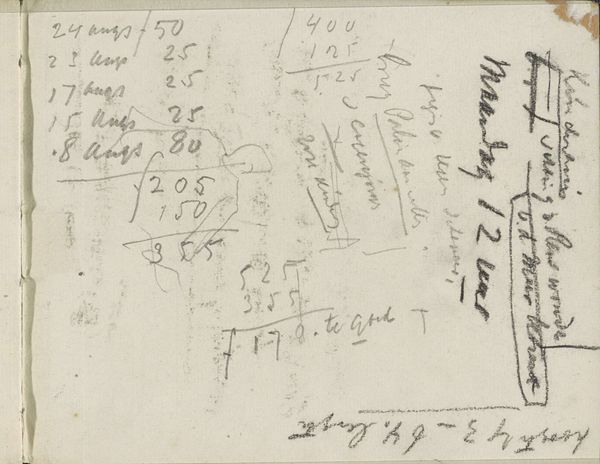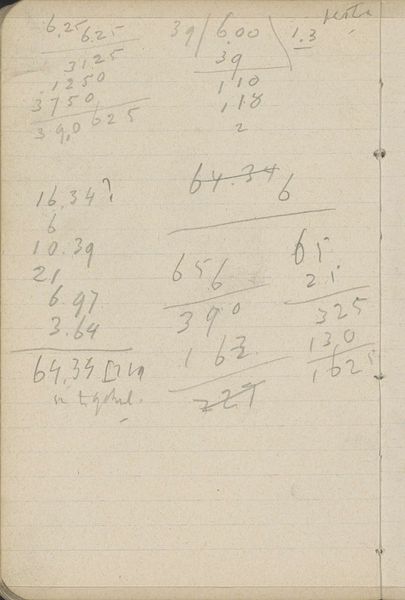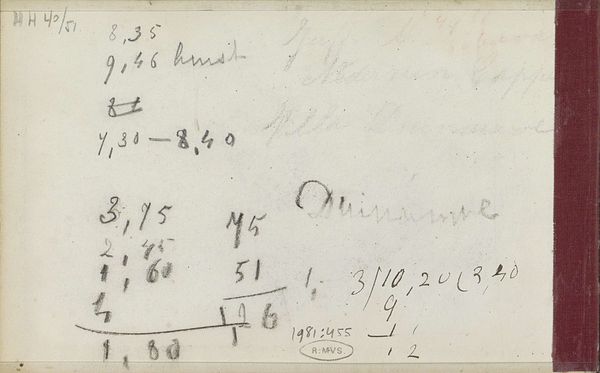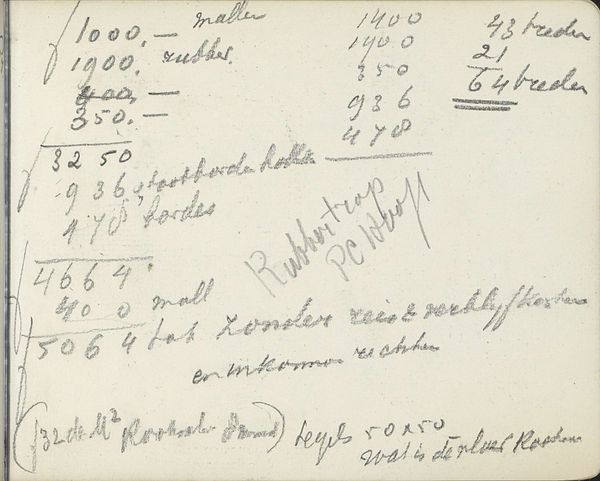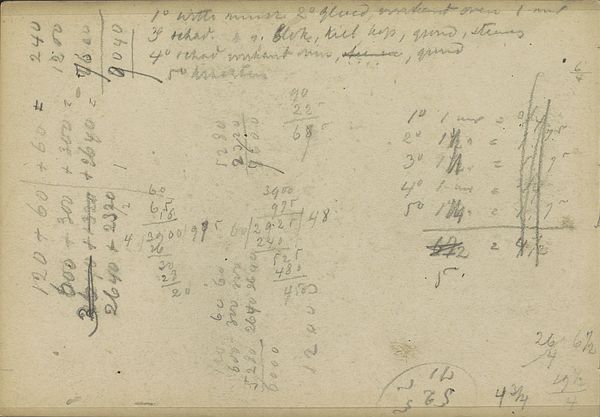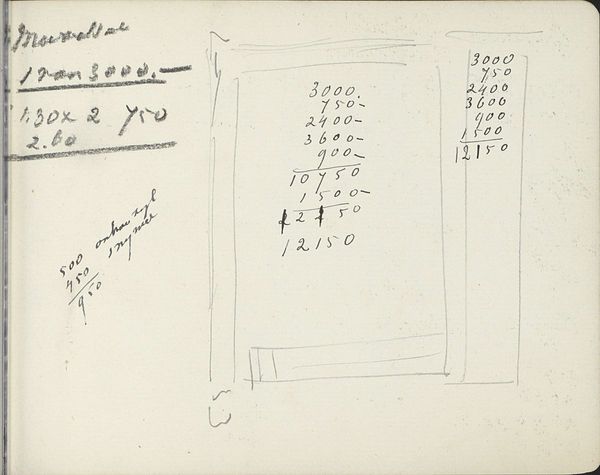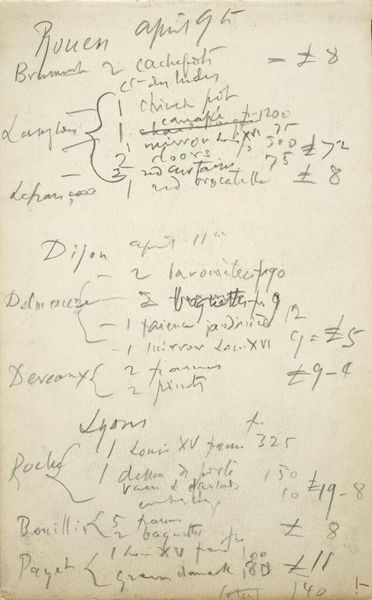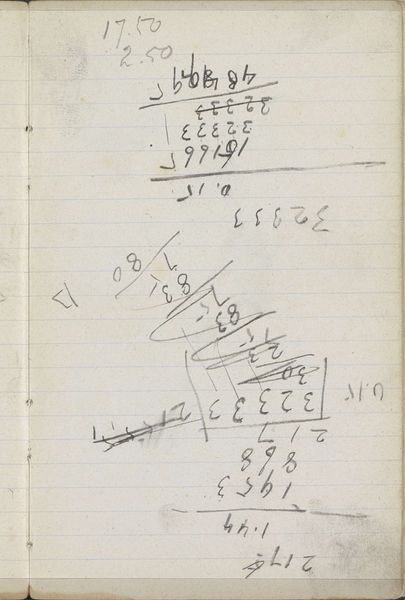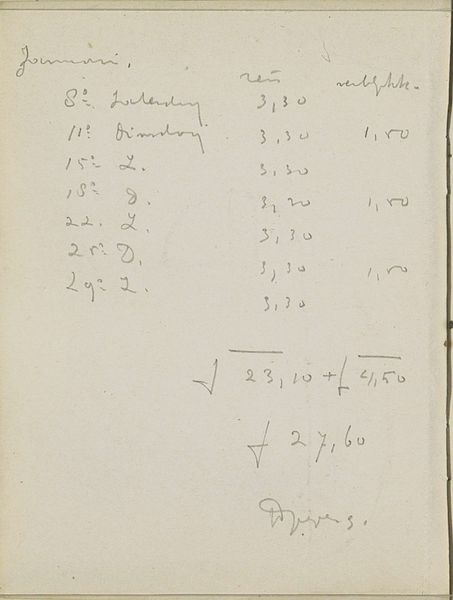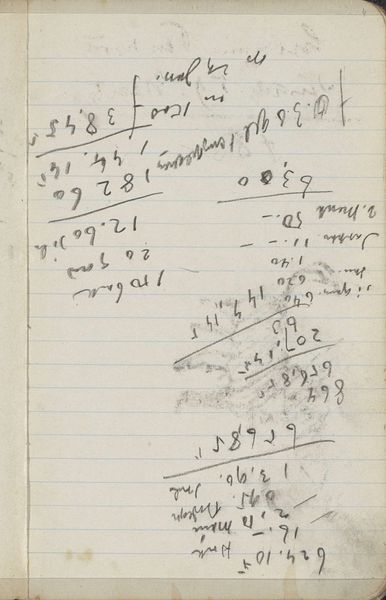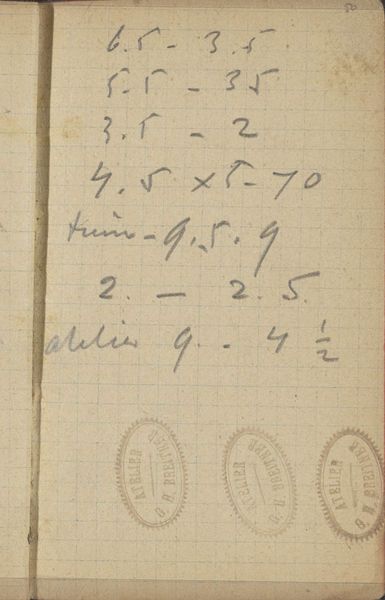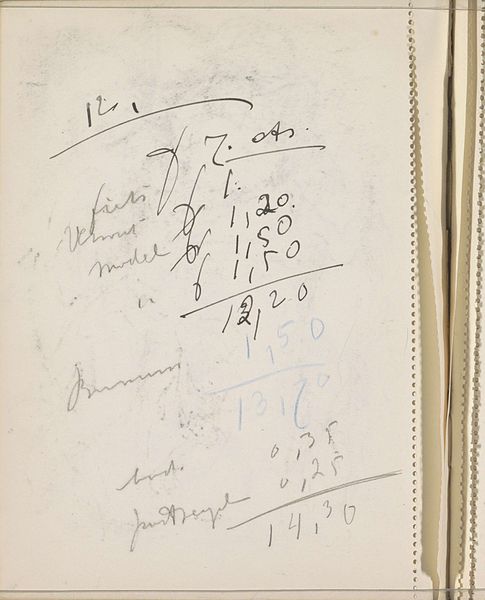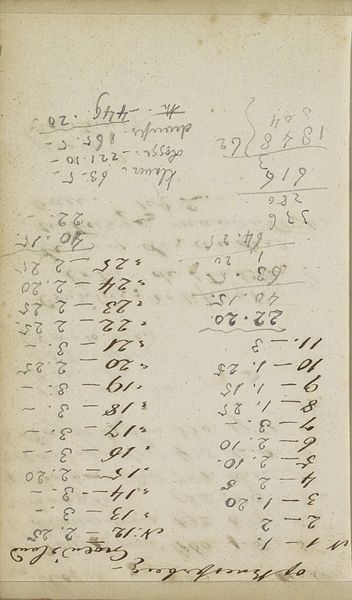
drawing, paper, pencil
#
drawing
#
paper
#
geometric
#
pencil
#
abstraction
Copyright: Rijks Museum: Open Domain
Curator: Here at the Rijksmuseum, we have Carel Adolph Lion Cachet's "Notities en berekeningen" – Notes and calculations – dating from around 1928. What’s your first impression? Editor: It’s… surprisingly captivating for what looks like a page of scribbled numbers. The overall effect, this intricate layering of pencil on paper, has an almost abstract quality to it, despite being so grounded in the concrete reality of mathematics. Curator: Indeed. Lion Cachet was clearly less concerned with neat arithmetic and more interested in the spatial relationships on the page. Look at how the different weights of the pencil strokes create depth. Notice the intentional disruption of an otherwise rigorous and consistent linear order. The composition avoids uniformity, inviting visual exploration across the network of figures. Editor: Absolutely. And given the era, post-World War One, I wonder how such mundane accounting intertwines with, say, artistic patronage and support. These notations hint at an economic support system underlying the art world during a tumultuous period. We might speculate who paid and who benefitted. What does the document suggest about the social ecosystem surrounding art? Curator: Very astute. Also, the choice of pencil on paper – an unassuming, easily accessible medium – draws attention to the raw process of conceptualization. In contrast to elaborate calculations using pen and ink, these are very intimate and improvisational scribbles, reflecting the preliminary stage of thought. And yet, those geometries and abstract symbols resonate across different areas and movements in art from the early 20th century. Editor: To think, these casual jottings open a window onto not only a person’s private calculations, but perhaps also the larger cultural shifts that art embodies during its moment in history. What starts as a simple accounting document quickly develops as a mirror reflecting socio-economic pressures and influences. Curator: It challenges us to find beauty in the functional, doesn’t it? To appreciate the inherent aesthetics present even in mundane documents when the creator has a compositional sensibility? Editor: It certainly does. I am reminded that all forms of record-keeping, and documents, often carry far greater socio-historical weight than the face value of their content may indicate. Thank you for sharing the drawing!
Comments
No comments
Be the first to comment and join the conversation on the ultimate creative platform.
